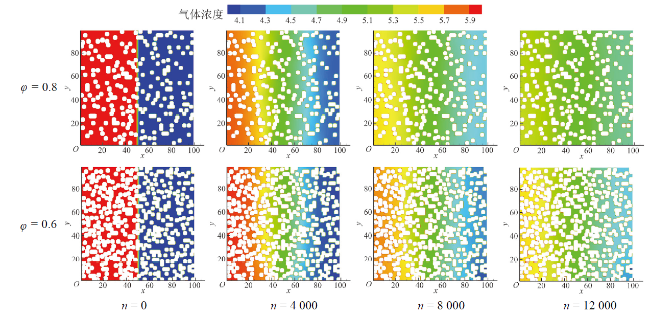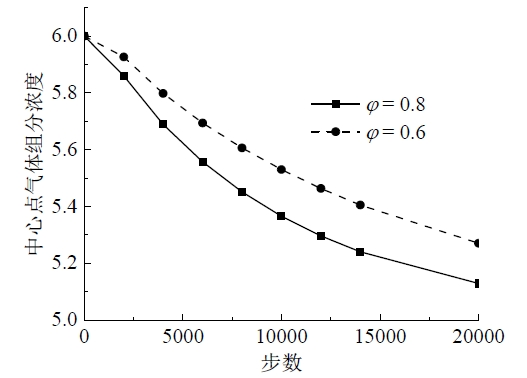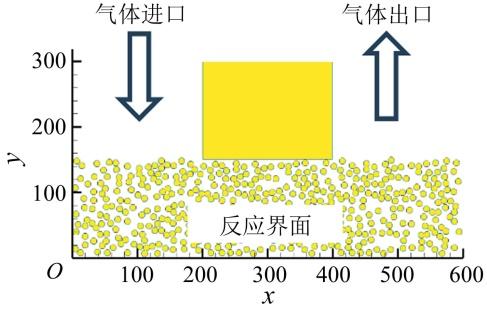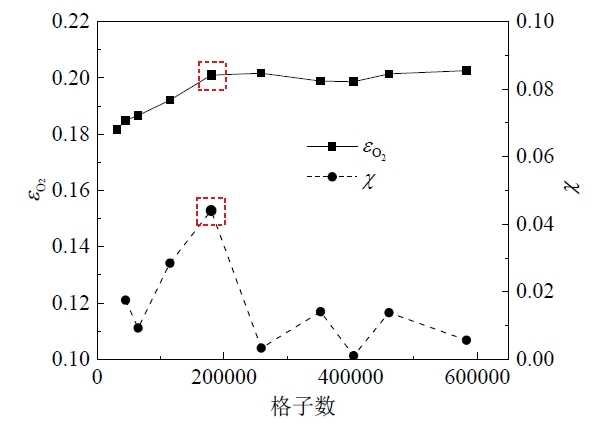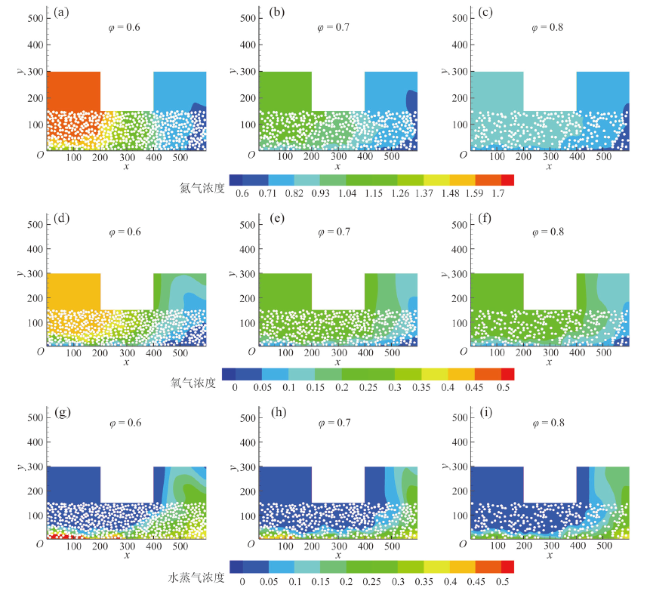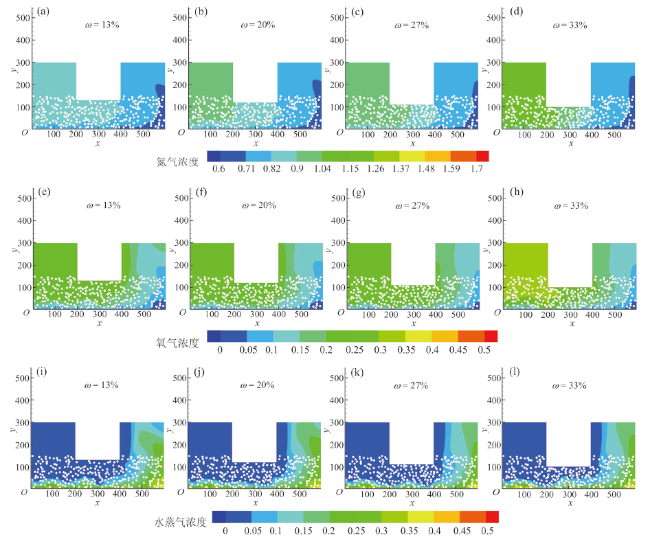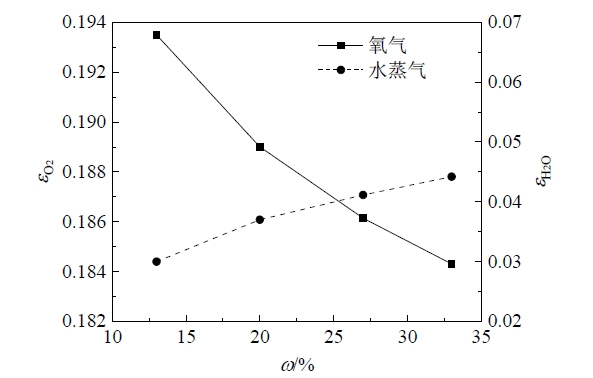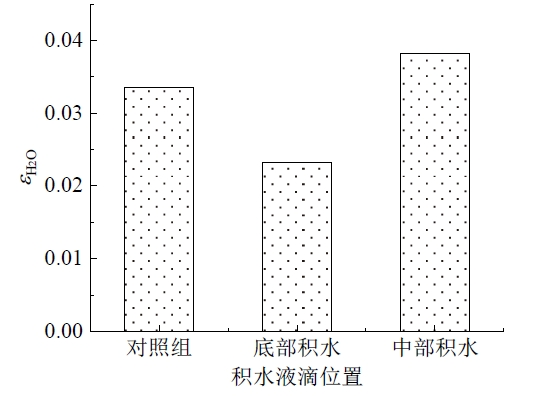0 前言
1 多相多组分模型
2 模型验证
Fig. 1 Concentration distribution of gas components for different mixing times with porosities of 0.8 and 0.6图1 孔隙率为0.8和0.6时,不同混合时间气体组分的浓度分布示意图 |
Fig. 2 Trends in concentration of gas components at the center of the two porosities图2 两种孔隙率中心点气体组分的浓度变化趋势 |
3 计算模型
Fig. 3 Characterization model of the joint part图3 连接处的特征模型 |
Fig. 4 Oxygen eigenconcentration ratio and grid convergence error versus number of grids in the model图4 模型中氧气特征浓度比和网格收敛误差与网格数的关系 |
4 模拟结果与讨论
4.1 孔隙率与扩散层压缩的影响
Fig. 5 Concentration fields of nitrogen (a-c), oxygen (d-f), and water vapor (g-i) with different porosities图5 氮气(a ~ c)、氧气(d ~ f)、水蒸气(g ~ i)在不同孔隙率下的浓度场 |
Fig. 6 Velocity fields of nitrogen, oxygen and water vapor mixtures with different porosities图6 氮气、氧气、水蒸气混合气体在不同孔隙率下的速度场 |
Fig. 7 Concentration fields of nitrogen (a-d), oxygen (e-h), and water vapor (i-l) at different compression ratios图7 氮气(a ~ d)、氧气(e ~ h)、水蒸气(i ~ l)在不同压缩比下的浓度场 |
Fig. 8 Variation curves of characteristic concentration ratio of oxygen and water vapor at different compression ratios图8 不同压缩比下氧气和水蒸气的特征浓度比变化曲线 |
4.2 积水液滴的影响
Fig. 9 Concentration fields of oxygen (a-c) and water vapor (d-f) at different droplet positions图9 氧气(a ~ c)和水蒸气(d ~ f)在不同液滴位置条件下的浓度场 |
Fig. 10 Velocity fields of nitrogen, oxygen and water vapor mixtures at different droplet positions图10 氮气、氧气、水蒸气混合气体在不同液滴位置条件下的速度场 |
Fig. 11 Variation curves of characteristic concentration ratio of water vapor at different droplet positions图11 不同液滴位置下水蒸气的特征浓度比 |




